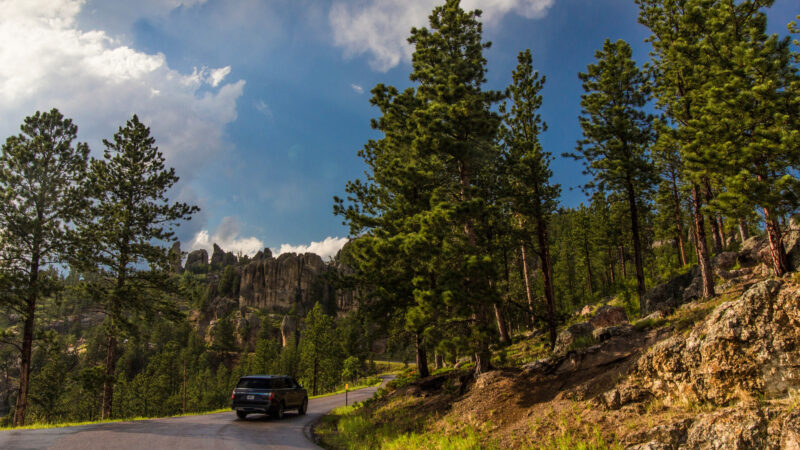Table of Contents Show
If you’ve traveled for any length of time, you’ve likely driven some breathtaking highways. Maybe you’ve taken Park Road through Acadia National Park or Zion Canyon Road in Zion National Park. America has spectacular drives that capture the majesty of the country.
But you don’t have to drive through national parks to get these amazing views. In this article, we look at routes RVers considered the most scenic highways in the country. Perhaps there’s one on your bucket list! Let’s drive in!
Scenic Routes Are Perks of RV Travel
One of the reasons many people choose to travel is to see our beautiful country. From the towering redwood forests in California to the rugged canyons and cliffs of Utah to the unending ridgeline of the Appalachian Mountains in the East, our nation is full of stunning scenery.
Instead of traveling by airplane and missing all of this beauty, RVers seek the road. It might take longer to reach our destination, but along the way, we get to witness breathtaking views.
Are All Scenic Drives Safe for RVs?
However, not all scenic drives are conducive to RV travel. Many travelers in campervans or small SUVs towing mini trailers can travel just about anywhere.
But for most RVers with motorhomes or large fifth wheels, we have to really pay attention to our route planning to ensure we safely traverse the country.
For example, Scenic Byway 12 through Utah isn’t recommended for RV travel. Is it restricted? No, but the tight turns, narrow roads, and steep grades make traveling in an RV dangerous for many.
However, Skyline Drive through Shenandoah National Park in Virginia is perfectly safe for RVs. You can pull in and out of the overlooks to view the majesty of this mountain range and surrounding valleys.
So it’s very important to read up on your route if you choose to take a scenic drive. Pay attention to what other RVers have written on apps and forums, particularly people with the same size RV.
Ask Facebook groups about a certain road and whether or not they’ve ever traveled it. Ask if they would travel it again and what to expect if you do decide to drive it.
But always make safe decisions. Seeing this beautiful country is amazing. But it’s not worth risking your life or the lives of others. If you have a second vehicle, you can park the RV and take the smaller car in for a scenic drive.
Facebook User Asks Group About Most Scenic Drives
In one Facebook group, a user recently posted a question asking RVers about their favorite scenic drives. Some travelers mentioned scenic routes that weren’t RV-friendly but were worth taking an Uber, renting a car, or driving a second vehicle.
Other travelers mentioned RV-safe scenic drives. So let’s dive in and take a closer look!
1. The Redwood Highway
Location: California
Length: 350 miles
RV-Friendly: Yes
About: Passing through Redwood National Park and Redwood State Park, this highway may be the most enchanting drive in America. The colossal coastal redwoods tower over 300 feet and provide plenty of shade.
It has places to park along the way so you can get out and hike trails that’ll take you farther into the forests to see the famous groves. If you continue following the route south, you’ll encounter even more of California’s beautiful coastline as you travel Highway 101.
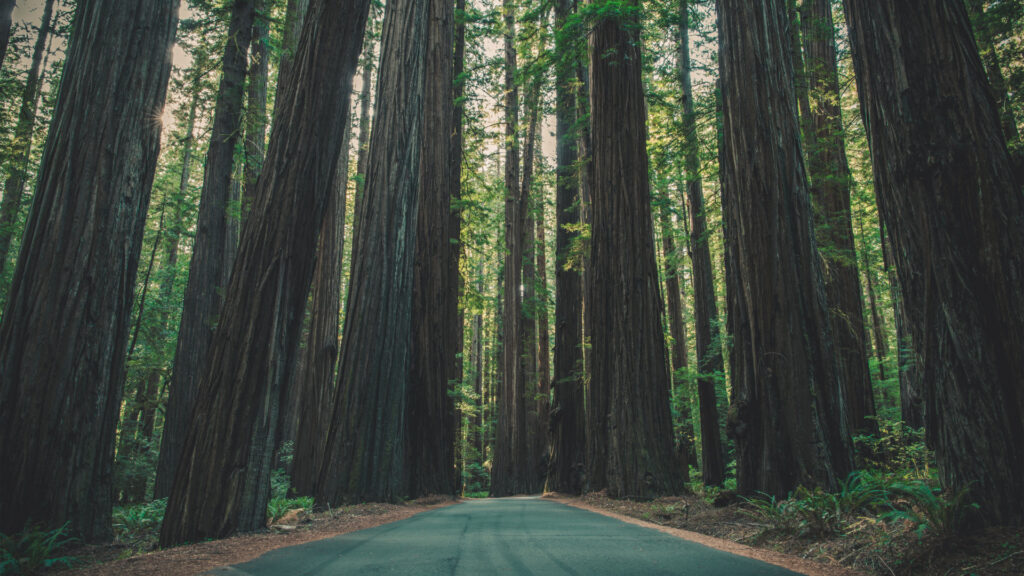
2. The Alaska Highway
Location: Alaska and Canada
Length: 1,387 miles
RV-Friendly: Yes
About: Built during WWII, the Alaska Highway connects the Lower 48 to The Frontier State. It starts in Dawson Creek, British Columbia, and ends in Delta Junction, Alaska.
The jaw-dropping scenery includes waterfalls, rugged cliffs, lakes, rivers, forests, and snow-covered mountains. You might see a moose or a timber wolf from the highway or along a trail if you choose to venture into the wilderness on foot.
The waterfalls and lakes are often frozen, providing glistening landscapes and beautiful photo opportunities.
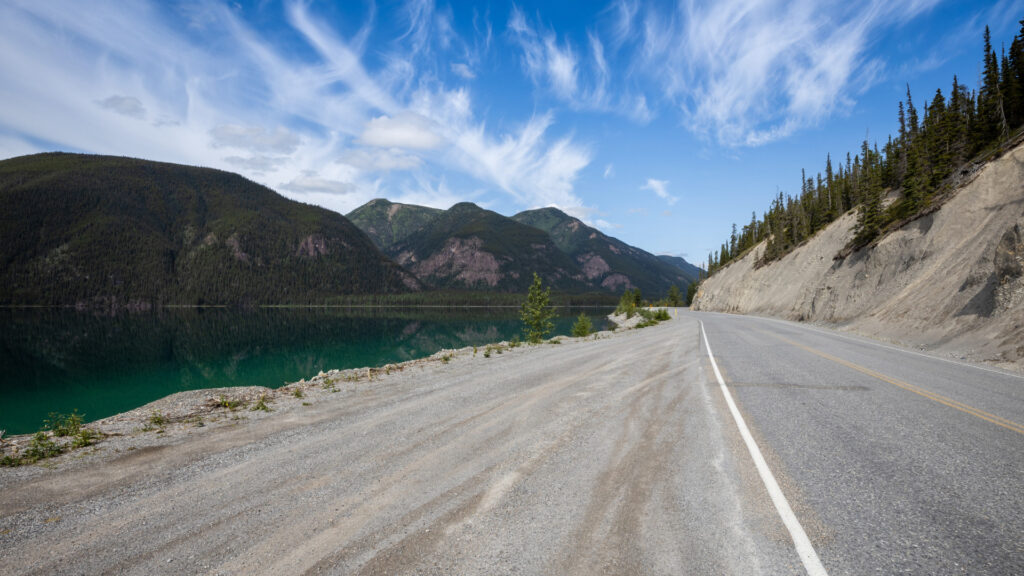
3. The Blue Ridge Parkway
Location: North Carolina and Virginia
Length: 469 miles
RV-Friendly: In some areas yes, no in others.
About: The Blue Ridge Mountains make up part of the larger Appalachian chain. The parkway starts outside Waynesboro, Virginia, and continues south to Cherokee, North Carolina. It connects Shenandoah National Park and the Great Smoky Mountains National Park.
The longest linear park in the country, the Blue Ridge Parkway provides spectacular vistas into the wide-open, rugged landscape of this eastern mountain chain and access to tunnels, waterfalls, hiking trails, swimming holes, and more.
This parkway is RV-friendly in some locations and not in others. Research where you should get onto the parkway and where you should get off if you plan on taking your RV.
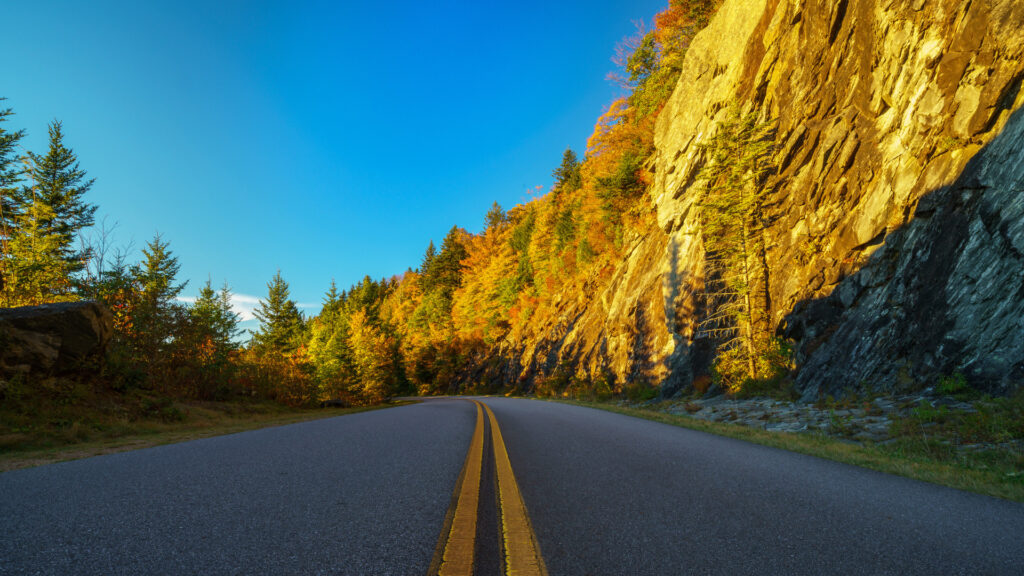
4. Going-to-the-Sun Road
Location: Montana
Length: 50 miles
RV-Friendly: No
About: These last four scenic drives are not RV-friendly. You should only take these roads in a smaller vehicle. The Going-to-the-Sun Road in Glacier National Park is listed as a National Historic Place, a National Historic Landmark, and a Historic Civil Engineering Landmark.
The hairpin curves don’t accommodate RVs but take travelers through the Logan Pass. Rock overhangs also require low-clearance vehicles.
Your heart will race, but the drive will be totally worth it as you navigate through forests and mountains while viewing hanging gardens, waterfalls, and lakes. Some consider it one of the most diverse scenic drives in the country!
Keep in Mind: Thinking of camping in Glacier National Park? Here’s What They Don’t Tell You About Camping in Glacier!
5. The Historic Columbia River Highway
Location: Oregon
Length: 75 miles
RV-Friendly: No
About: If you want a scenic drive with stunning waterfalls, the Historic Columbia River Highway may be one of the best options in America.
You’ll view Oregon’s tallest waterfall, Multnomah Falls, and the popular Wahkeena and Horsetail Falls. However, you must obtain timed entry permits to drive from Bridal Veil to Ainsworth State Park.
Like the Going-to-the-Sun Road in Montana, the Historic Columbia River Highway is also on the National Register of Historic Places. It’s also a National Historic Landmark and National Historic Civil Engineering Landmark.
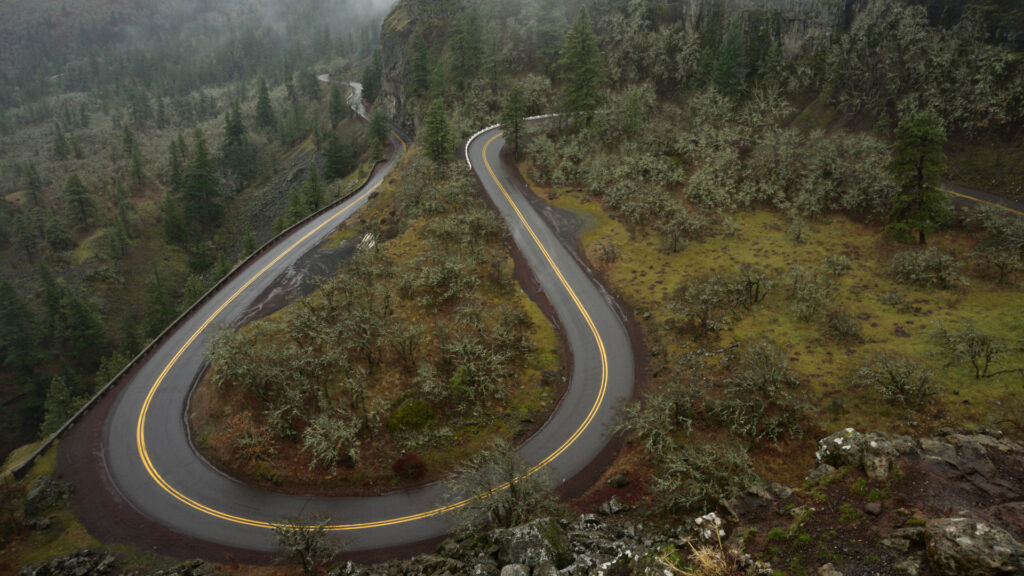
6. The Million Dollar Highway
Location: Colorado
Length: 25 miles
RV-Friendly: No
About: The Million Dollar Highway runs from Silverton to Ouray in southwestern Colorado. It’s part of the greater Highway 550 that extends into New Mexico. The most scenic portion of the Million Dollar Highway is the stretch of road that runs through the Uncompahgre Gorge to the summit of Red Mountain Pass.
Steep cliffs, narrow lanes, and a lack of guardrails can make this trek dangerous while showcasing some of the best scenery in the country. Hairpin curves and steep grades are additional reasons not to drive an RV on this highway.
But if your nerves can take it, driving your second vehicle through this pass will lead to breathtaking views of alpine meadows and rugged mountains.
Keep in Mind: If you’re looking for a stunning drive, the Million Dollar Highway needs to be on your bucket list! Before you go, here’s what you need to know
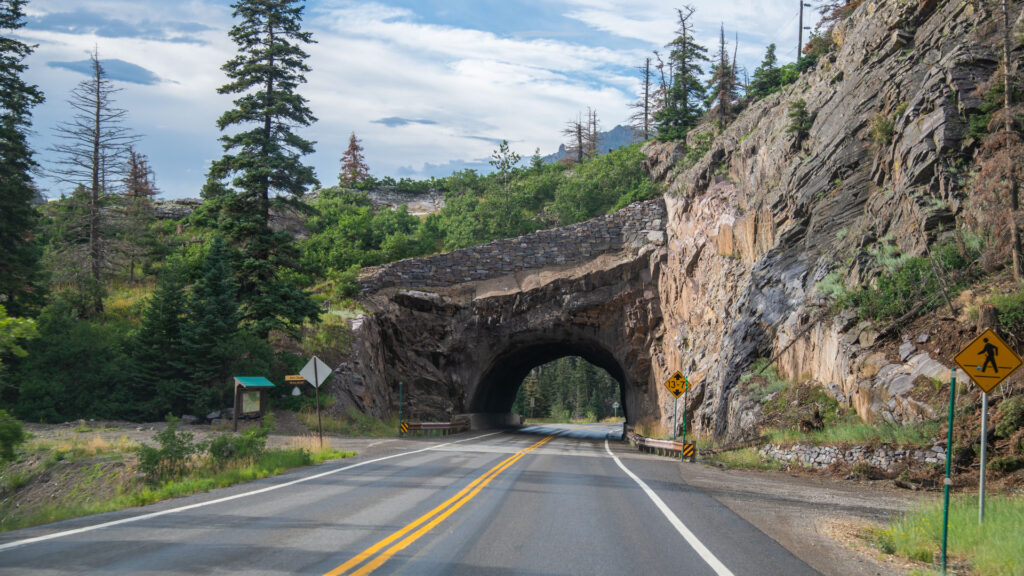
7. The Needles Highway
Location: South Dakota
Length: 14 miles
RV-Friendly: No
About: Finally, many travelers suggest driving the Needles Highway. This 14-mile stretch of Highway 87 in South Dakota starts near Legion Lake and ends near Sylvan Lake. You’ll pass through the tall granite Cathedral Spires that give this part of the highway its name.
You can enjoy the breathtaking views of the Black Hills. In addition, you have a high chance of seeing wildlife, including bison, elk, moose, pronghorn, and bighorn sheep. You must pay a fee of $20 to enter Custer State Park, where the Needles Highway begins and ends.
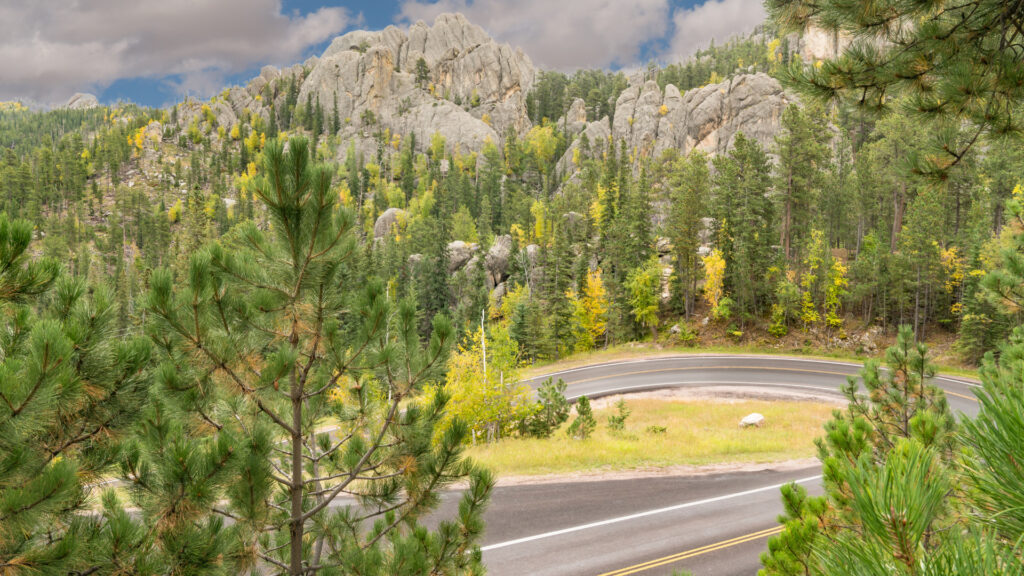
Tips for Traveling Scenic Byways in an RV
If you want to take your RV along a scenic byway, it’s critical that you do your research.
Some routes are closed to RVs due to height, width, or length restrictions. Other roads may require a permit with an escort through a narrow stretch or tunnel for RVs.
One of the main problems with driving an RV along a scenic byway is that the driver often doesn’t enjoy the views. If you must focus on making hairpin turns or shifting gears, the beautiful views aren’t your number one priority. So consider whether or not you’ll actually get to enjoy the drive.
Also, take advantage of the overlooks and pull-offs. This isn’t just to take a few photos and breathe in the majesty of the landscape. Pull-offs also give your RV or tow vehicle a break. When driving along mountain passes, your engine and brakes need to cool.
Embrace America’s Beauty With These Scenic Routes
Whether you take your RV or drive a second vehicle, America is full of beautiful drives. Just make a well-informed, safe decision before you venture out with your 40-foot motorhome or 25,000-pound toy hauler. You want to enjoy these scenic routes and not be white-knuckle driving.
Is there a scenic drive you’d add to the list?




